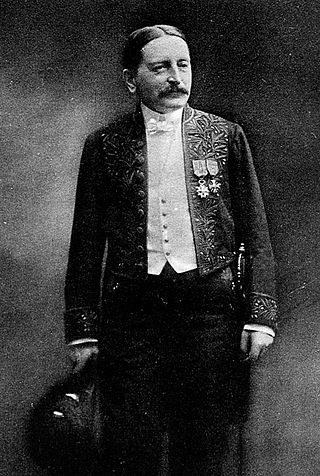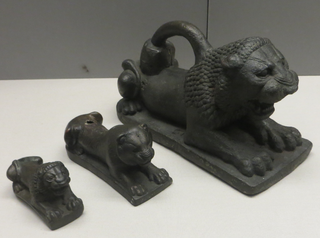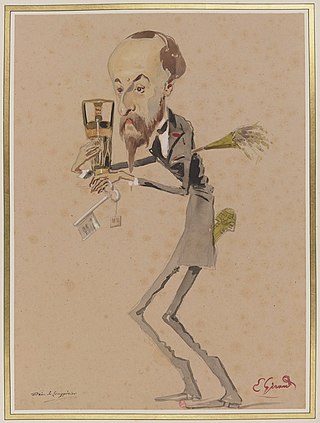Related Research Articles

Eugène Burnouf was a French scholar, an Indologist and orientalist. His notable works include a study of Sanskrit literature, translation of the Hindu text Bhagavata Purana and Buddhist text Lotus Sutra. He wrote a foundational text on Buddhism and also made significant contributions to the deciphering of Old Persian cuneiform.

Charles Adrien Casimir Barbier de Meynard, born at sea on a ship from Constantinople to Marseille, was a nineteenth-century French historian and orientalist.

Jean Paul Louis François Édouard Leuge-Dulaurier was a French Orientalist, Armenian studies scholar and Egyptologist.

Hermann Zotenberg was an orientalist and Arabist.
Natalis de Wailly was a French archivist, librarian and historian.

IN Group is a French company specialized in the production of secure documents such as identity cards and passports, which it designs and sells to various governments and companies.

Joseph Halévy was an Ottoman born Jewish-French Orientalist and traveller.

François Thureau-Dangin was a French archaeologist, assyriologist and epigrapher. He played a major role in deciphering of the Sumerian and Akkadian languages.
André Basset was a French linguist. René Basset was his father and Henri Basset his older brother.
Arthur Amiaud was a French Assyriologist and philologist.

The Assyrian lion weights are a group of bronze statues of lions, discovered in archaeological excavations in or adjacent to ancient Assyria.

Jean Nougayrol was a French cuneiformist who studied a number of the Amarna letters.

Abel Jean Baptiste Michel Pavet de Courteille was a 19th-century French orientalist, who specialized in the study of Turkic languages.

Henry Adrien Prévost de Longpérier was a 19th-century French numismatist, archaeologist and curator.
Henri Massé was a 20th-century French orientalist. He was first professor of Arabic and Persian literatures at the faculté des lettres d'Alger, then professor of Persian language at the École nationale des langues orientales vivantes of Paris (1927–1958), of which he was administrator from 1948 to 1958 and a member of the Académie des Inscriptions et Belles-Lettres.
Charles Schoebel (1813–1888) was a 19th-century French ethnologist, palaeographer and linguist.
Rubens Duval was a French orientalist, specialist of the Aramaic language.
Henri Pognon was a French archaeologist, epigrapher, and specialist in Assyriology.

René Cagnat was a French historian, a specialist of Latin epigraphy and history of North Africa during Antiquity.

Baron Alban Emmanuel Guillaume-Rey was a French archaeologist, topographer and orientalist. He is known for his historical works on Crusader states and on military fortifications in the Near East. He is considered by some as the first archeologists of the Crusades.
References
- 1 2 3 One or more of the preceding sentences incorporates text from a publication now in the public domain : Chisholm, Hugh, ed. (1911). "Ménant, Joachim". Encyclopædia Britannica . Vol. 18 (11th ed.). Cambridge University Press. p. 111.